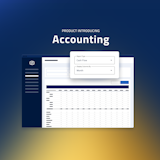What is the 1031 Exchange Timeline for 2021? [+ infographic]
A 1031 exchange goes by many names, including a Starker Exchange, a Like-Kind Exchange, or simply a 1031. Regardless of the name, a 1031 exchange offers real estate investors unique tax benefits that can’t be found in any other asset class.
President Biden has hinted he plans on addressing the 1031 exchange, with some rumors that it could be reformed or eliminated altogether. With capital gains increases highly likely, investors will need to explore different tax strategies such as the 1031 exchange, and the timeline of this tactic is critical.
In this article we’ll take a look at the key benefits of a tax deferred exchange, important rules to know, and how the 1031 exchange timeline works for 2021.
What is a 1031 Exchange?
A 1031 exchange gives real estate investors a way to defer paying tax on capital gains and depreciation recapture tax by selling one investment property and purchasing another.
Keeping more of your hard-earned money instead of giving it the government may sound too good to be true. But Section 1031 of the Internal Revenue Code is just one of the many benefits to investing in real estate in the U.S.
And, savvy investors can also leverage other strategies alongside this one, such as Schedule E deductions.
Key Benefits of a Section 1031 Exchange
The biggest benefit of a Section 1031 exchange is kicking the payment of capital gains tax down the road. After all, why pay taxes today if you can defer payment to a later date?
This is particularly important for real estate investors because all signs point to higher capital gains taxes from the Biden administration.
Key reasons why so many real estate investors include a 1031 tax-deferred exchange as part of their standard business operating procedure are:
- Defer paying capital gains and depreciation recapture tax to revinest the capital in investment real estate.
- Diversify a real estate portfolio geographically, by asset class, or both, such as selling a shopping center in Los Angeles and purchasing several single-family rental houses in Charlotte.
- Cash-out of a market where prices have gone sky high and revinest the profits in more affordable, secondary real estate markets.
- Reset the depreciation clock by buying a new property and beginning the depreciation cycle all over again.
1031 Exchange Timeline for 2021
The maximum time to complete a 1031 exchange is 180 days from the sale of your relinquished property to the closing on the replacement property:

Step 1: List property for sale
List relinquished property for sale and begin looking for a replacement property. In fact, there’s no rule that says you can’t begin looking for a new property before putting your current one on the market.
Step 2: Hire a QI
Hire a qualified intermediary (QI) to facilitate your 1031 exchange and ensure the exact exchange rules are followed. IRS 1031 exchange rules are very specific, and missing a deadline by just one day can jeopardize the entire tax-deferred exchange.
Step 3: Close escrow on relinquished property
Complete the sale of your relinquished property with the QI receiving all sales proceeds. Investors who ‘touch’ the sales proceeds in any way will find themselves liable for paying capital gains tax.
Step 4: Identify replacement property in 45 days
45 days from the sale of relinquished property identify one or more replacement properties in writing. Generally speaking, ‘identify’ means putting the replacement property under contract with the seller agreeing in writing to cooperate with the buyer’s 1031 tax-deferred exchange.
Step 5: Close on replacement property in 180 days
You have 180 days from the sale of the relinquished property to close on the sale of the replacement property with the QI transferring funds from the relinquished property to the seller of the replacement property.
Important 1031 Exchange Rules to Know
If you’re considering conducting a 1031 exchange to keep more of your capital for reinvestment, there are several important rules to know:
- Property must be held for investment purposes, not as a primary residence or a property for personal use.
- The like-kind rule means the property must be real estate but can be of a different quality or type, such as an older neighborhood shopping center for several new single-family rental houses.
- The replacement property must be in the same owner name as the property relinquished, such as the same individual or an LLC.
- The 3 property rule allows investors to identify up to three replacement properties provided at least one of them is purchased.
- The 200% rule gives real estate investors the option of identifying any number of replacement properties as long as the total aggregate value isn’t more than 200% of the relinquished property sale price.
- The 95% rule lets investors identify any number of replacement properties provided that 95% of the total value of the replacement properties is purchased.
- There is a 45-day limit to identify a replacement property from the date the relinquished property is sold.
- The deadline is 180 days from the date the relinquished property is sold to close on the sale of the replacement property or properties.
- The replacement property must be of equal or greater value than the relinquished property to completely defer any capital gains tax due.
- Fix and flip properties or real estate held for less than one year don’t qualify for a 1031 exchange because the IRS considers those to be “stock in trade” rather than real estate held for investment purposes.
Main Types of a 1031 Tax Deferred Exchange
The most common type of 1031 exchange is the “delayed” exchange, where a relinquished property is sold before identifying and closing on the sale of the replacement property.
However, there are actually four main types of 1031 tax-deferred exchanges investors can use to meet their specific needs:
Simultaneous exchange
A simultaneous 1031 tax-deferred exchange takes place when the relinquished property is sold and the replacement property is purchased on the same day. This was originally the way a 1031 exchange took place until the tax law was updated to be more real estate investor-friendly.
Delayed exchange
The delayed exchange occurs when the relinquished property is sold before the replacement property is purchased. If an investor does not purchase a replacement property, capital gains tax must be paid on the proceeds from the sale of the relinquished property.
Reverse exchange
A reverse 1031 exchange takes place when the replacement property is purchased before the relinquished property is sold. For example, an investor who finds an incredible deal may want to purchase the new property before selling the current one.
The same 1031 exchange timelines still apply to a reverse exchange, except that the relinquished property must be identified with an offer accepted in 45 days and close escrow within 180 days of the purchase of the replacement property.
Improvement exchange
An improvement 1031 exchange allows an investor to significantly upgrade or build a replacement property within 180 days of the sale of the relinquished property.
The replacement property must have the same post-improvement value of the relinquished property. For example, an investor could purchase a fixer-upper multifamily property and make renovations within the 1031 exchange timeline.
Closing 1031 Exchange Thoughts
Could the 1031 tax-deferred exchange be modified or repealed by President Joe Biden? Although it’s too soon to tell, all signs appear that 1031 exchanges remain a target for repeal or further limitation.
If a 1031 exchange repeal or limitation occurs, sellers may become more motivated to dispose of property to profit from the existing laws governing tax-deferred exchanges, while buyers may find potential investment opportunity from buy-and-hold investors wanting to sell fast.
It’s time to think more carefully about the 1031 exchange timeline and whether it fits with your investment strategy.




